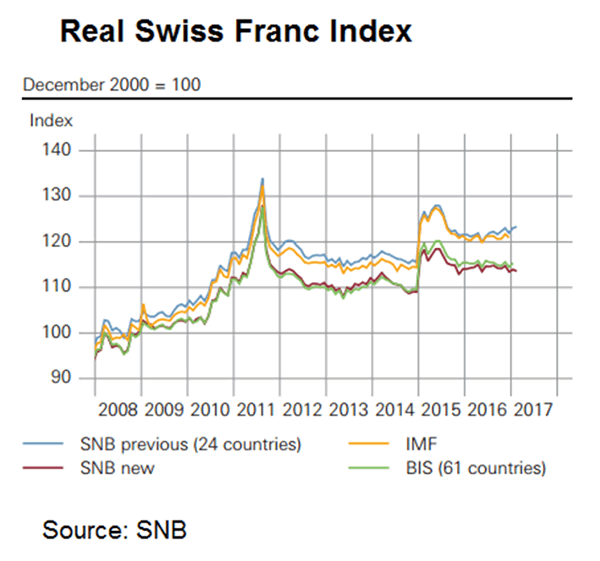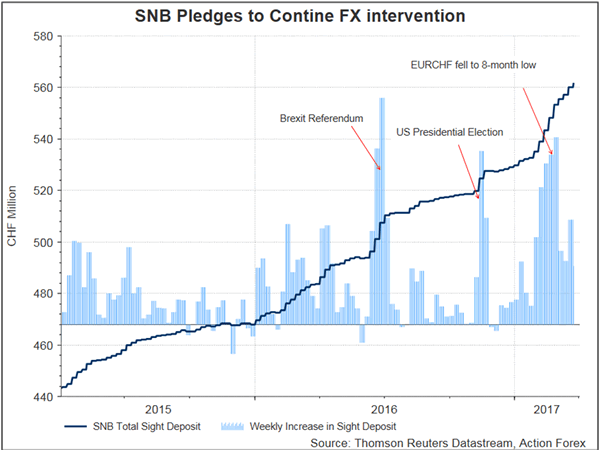EURCHF recovered after declining over the past three weeks. Political uncertainty and diminished expectations of ECB’s QE tapering has pressured the single currency and raised demand for safe-haven assets. Despite the selloff to as low as 1.0629 in February, EURCHF had then rebounded to a 3-month high of 1.0825 in mid-March, before settling at 1.068 at end-1Q17. This came in line with over forecast of 1.07 for the first quarter. Movement of USDCHF was, however, more volatile than we had anticipated. The currency pair indeed broke below 1, plunging to a 4.5-month low of 0.9812 on March 27 before returning to parity on March 31.
We attribute the sharper-than-expected weakness in US dollar over the past quarter to the inability of US President Donald Trump’s administration. Indeed, the market has turned less optimistic over the president’s pro-growth policy, after the withdrawal of the healthcare bill. However, the price movements in the first quarter do not alter our view that SNB has turned more tolerable to franc’s appreciation, although FX intervention would continue should euro’s selloff accelerate.
SNB new exchange rate index
SNB unveiled in its latest quarterly bulletin a new method to calculate Swiss franc’s exchange rate index. The central bank indicated that the new method “allows the Swiss economy’s competitive and trading relationships to be replicated in a more comprehensive and up-to-date way”. It laid down three key differences between the new and old methods.
- First, the weighting of a specific country in the new method is based both on exports to and imports from this country as well as on so-called third-market effects. As such, the new method gives greater consideration to competitive relationships between Switzerland and its trading partners than the previous one.
- Second, the calculation of the country weightings includes global trade in both goods and services, compared with only goods in the old one.
- Finally, the new index is chained, in contrast to the fixed base period of the previous index. SNB suggested that this allows the group of countries taken into consideration in the index to be reviewed every year.
With the December 2000 reading set at 100, the nominal effective exchange rate index using the new method was 156.5 in early March, compared with 155 under the old method. Meanwhile the real exchange rate index was revised to around 114, compared with the previous reading around 120.

The real index at December 2000 was set at zero. According to SNB, the new indices continue to show that the Swiss franc is “significantly overvalued”. In our opinion, the downward revision of the real index signals that the degree of overvaluation is less extreme, offering SNB more rooms to avoid aggressive intervention.

SNB bought CHF 67.1b of foreign currencies in 2016
Indeed, SNB was more constrained in FX intervention last year, when compared with the prior year. The latest statistics show that the central bank bought CHF 67.1B worth of foreign currencies in 2016, compared with CHF 86.1B in 2015 when it intervened aggressively soon after removing the EURCHF floor of 1.2.

According to SNB, FX intervention “occurred mainly at times of heightened uncertainty, when the Swiss franc was particularly sought after as a safe investment". The March FX reserve data, due Friday, is closely watched. The market currently expects a widening of +CHF 5.8B to CHF 674B for the month.













